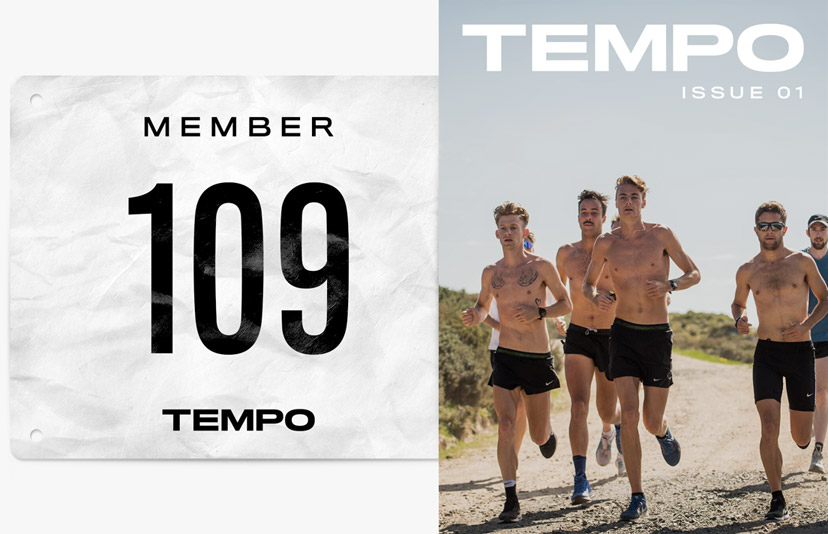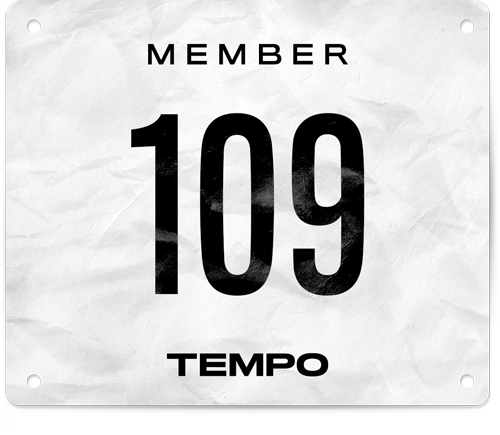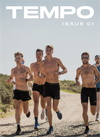Culture
Taking It Back to Where It All Began
Take the Bridge Celebrates 10 Years of Unsanctioned Racing
As the sun sets on the evening of 25 July, 400 runners will gather on the Long Island City waterfront with the Manhattan skyline glowing behind them. They’ll stretch and share encouragement and nervous energy before the gun fires for the biggest Take the Bridge race ever staged. Ten miles for 10 years, weaving through at least three bridges, finishing back where they started for what founder Darcy Budworth promises will be “an elevated Take the Bridge race experience that nobody’s ever had before”. It’s a far cry from the first summer evening in 2015 when Darcy convinced 20 friends to meet her for a one-way dash across the Queensboro Bridge. Back then, Take the Bridge was just an idea—a small rebellion against the status quo of organised running. A decade later, it’s become the standard-bearer for a movement that has fundamentally changed how people think about racing. “This isn’t just a celebration of Take the Bridge,” Darcy reflects. “It’s a celebration of the movement of unsanctioned racing. A celebration of the run community taking ownership and putting their name on how they want to race.”
“Run crews are the answer to run clubs, as unsanctioned racing is to your standard 5K, 10K.”
Darcy Budworth
The Accidental Pioneer
Darcy didn’t set out to revolutionise anything. The Oregon native had moved to New York for art school and, like many transplants, found herself swept up in the city’s infectious running culture. Despite growing up in a family of runners—her mother was a competitive speed walker, her sister a distance runner—Darcy hadn’t caught the bug until landing in Brooklyn. “I was not a runner until I moved to New York, which is funny because I grew up in Portland,” she says. Portland is, of course, a storied running city, home to beautiful trails as well as brands such as Nike, adidas and On. “But I feel like New York is such a running hub. There’s so many things going on with running in New York.” She joined the New York Harriers, a club that had been around since the 1970s, an exemplar of the city’s established running scene. Darcy threw herself into it with characteristic intensity, ticking off 5Ks, 10Ks, half marathons and marathons. But after a while, the formula began to wear thin.
“I think at a certain point I was just getting tired of the status quo of all these runs, all these races,” she explains. Then she discovered something different. Other runners in the city were organising informal, unsanctioned races—events that operated outside the traditional framework of official timing, permits and entry fees. When Darcy jumped in on one thrown by Orchard Street Runners, it was a revelation. “It made me run a lot more dynamically and be paying attention to all these different things that are happening around me, pacing myself off of other people that I knew in the race,” she recalls. “It got me out of my head of looking at my watch and looking at my splits” The experience sparked something. Darcy, who describes herself as “a leader by default” who “constantly wants to start things and do things and take the charge”, decided she wanted to create that same experience for others.
“I didn't want Take The Bridge to feel like a NYC race that we forced into other cities. I wanted each city's race to feel specific to that city.”
Darcy Budworth
Building a Movement
The first Take the Bridge race was modest by any measure. Around 20 runners—roughly 10 men, 10 women—gathered for that first race across the Queensboro Bridge, followed by drinks at a bar. Darcy had planned it as the first of three summer races, figuring she’d have to cajole her friends to come to the first but hoping the series might catch light by the third. The strategy worked. Each race drew more participants, and by the end of that inaugural summer for each event Darcy was fielding two heats of around 30 people, 60-odd in total. The timing was perfect—she was also pacing for Nike Run Club when it first launched, giving her access to a community of runners hungry for something different. And it helped that Take the Bridge was emerging into a moment of broader cultural shift within running. The mid-2010s marked the rise of run crews—informal groups that offered an alternative to the traditional run club model.
“When I say run crews, it was much more about building community and culture within running and really thinking of running outside of the box,” Darcy explains. “The run clubs were these skinny white guys, a few women, they’re Type A, very performance driven, whereas run crews were about building community.” In this context, unsanctioned racing felt like a natural evolution. “Run crews are the answer to run clubs, as unsanctioned racing is to your standard 5K, 10K,” Darcy says. “Both of them have a great place within running, but it gives you an alternative version of racing that gives us more ownership and creates more community and culture.” Nike quickly recognised what Darcy was building and offered sponsorship. More importantly, they suggested expansion: what about Boston before the marathon? Then Chicago, then Austin. Each event maintained Take the Bridge’s evening start times—racing in darkness—and its focus on bridges as both practical routes and symbolic connections.
“My hope has always been that when I leave a TTB city, other people feel inspired to do the same thing.”
Darcy Budworth on working with run crews in other cities
Spreading the Gospel
As Take the Bridge expanded across cities, Darcy developed a philosophy that would prove crucial to its success: rather than imposing a New York template, she collaborated with local run clubs and community leaders in each new location. “I didn't want Take The Bridge to feel like a NYC race that we forced into other cities. I wanted each city's race to feel specific to that city, to speak to what that city needed in racing at that time,” she explains. “My initial idea was that as we scale these races or bring them to other cities, we partner with local run crews, local leaders, and ask them what they want in their city for the race.” This approach allowed Take the Bridge to feel organic in each location while maintaining its core identity. But Darcy had a secondary goal: she wanted to teach others how to organise their own events.
“I bring run leaders in and have them be a part of organising the race with me, and I show them the ropes of how I throw a race,” she says. “My hope has always been that when I leave a new TTB city, other people feel inspired to throw their own race.” For example, after collaborating on a Take the Bridge event in Boston, Pioneers founder Sidney Bautista approached Darcy about throwing his own version. Her response was immediate: “Oh my god, go ahead.” “I think that’s been a part of helping to create this movement and create a growth in this, and it wasn’t something that I was gatekeeping—it was something that I wanted to spread and share with everybody,” Darcy reflects.
“It’s a bigger production, [but] I still want to make sure it feels like a Take the Bridge.”
Darcy Budworth on TTB’s 10th-anniversary event
It’s not all street-and-bridge running either. When Darcy moved to Los Angeles for work as part of her interior design career, trail runners approached her about adapting the concept for hill routes. That led to Take the Ridge events in the Santa Monica Mountains, which in turn inspired Adam Tallon to create his own Local Race series, bare-bones, DIY trail events—from a few miles to 100 miles—where participants receive emails sharing the “secret” historical stories of different LA neighbourhoods and runners coordinate post-race pizza and party speakers over Discord.
“He does not shy away from having a very hard race, a very hard race,” Darcy says. “And I love going to his races because then I get inspired for my own trail races.” During Covid, Darcy even pioneered remote race directing, coaching organisers in cities from Mexico City to Melbourne (shoutout AM:PM.RC) via Zoom calls, walking them through events in real time.
The Celebration
Now, after more than 100 races across multiple countries, Darcy is pulling back to focus entirely on one massive celebration. The July anniversary event represents a conscious shift in philosophy—fewer races, but bigger and more intentional ones. “I felt like with the more races I’m throwing, there’s the risk I’m not putting on the best race version that I possibly could, but also it waters down the image because people are like, ‘Well, I can just go to the next one,’” she explains. Supported by Saucony, the 10th anniversary race will accommodate 400 runners—nearly four times the size of a typical Take the Bridge event. Starting and finishing on the Long Island City waterfront, the 10-mile course will traverse multiple bridges with the Manhattan skyline as backdrop. For the first time, there will be live timing, a live stream projected on walls, and an MC announcing finishers.
The post-race celebration matches the elevated production values: Take the Bridge will take over an event space and a restaurant, with DJs and a full sound system, for what Darcy describes as a huge party. But despite the scale and production, she’s determined to maintain the event’s essential character. “Even though we’re doing a larger event and it’s a little bit more scaled and it’s a bigger production, I still want to make sure it feels like a Take the Bridge,” she emphasises. More than a celebration of one organisation’s milestone, Darcy sees the anniversary as recognition of an entire movement. The invitation extends beyond Take the Bridge alumni to anyone who has embraced the unsanctioned racing philosophy. “This is not just a celebration of Take the Bridge. We have pioneered this movement of owning how you race and throwing your own races. Everybody that’s throwing their own races—come and celebrate with us.”
Looking Forward
Early on in Take The Bridge’s evolution, Darcy created a vision board of what she wanted to achieve, and she has fulfilled her wildest dreams. “I put up run clubs that I wanted to work with, bridges I wanted to take, cities I wanted to be in,” she explains. ““In my heart of hearts, the biggest ambition I had was the Golden Gate Bridge. I did not think of any other countries. I literally just thought of the Golden Gate Bridge.” Take the Bridge conquered the San Francisco landmark in February 2021.
“And so it has surpassed my hopes and dreams. I literally started this not thinking that it would be anything besides me and my friends doing these races.”
Darcy created a new vision board focused on the upcoming anniversary event, but her longer-term dreams have evolved beyond specific locations or partnerships.
“This is not just a celebration of Take the Bridge. We have pioneered this movement of owning how you race and throwing your own races.”
Darcy Budworth
“I don’t tend to create goals for 10 years from now, but instead for the next two to three years,” she says of her outlook. Her vision has crystallised around the idea of fewer but more significant gatherings. Rather than spreading Take the Bridge events across multiple cities throughout the year, she imagines one annual celebration that moves between locations—New York this year, perhaps Los Angeles the next, maybe Nashville after that. “One race a year, a race you travel for,” she explains. “Similar to Bridge the Gap, where all the crews come together. Wherever we’re at, you come.” It’s a model that reflects how unsanctioned racing has evolved from a rebellious alternative to an established part of the running landscape. With countless crews now organising their own events, Take the Bridge no longer needs to be everywhere at once. Instead, it can serve as an annual gathering point—a celebration of a movement that started with 20 friends on a bridge and grew into something that changed how thousands of people think about racing. On 25 July, 400 runners will gather in Long Island City to test that theory. They’ll race through the summer night across bridges that connect not only boroughs but also a community. One that has spent a decade proving there are as many ways to race as there are reasons to run.
Registration for Take the Bridge’s 10th-anniversary celebration is open at takethebridge.us


